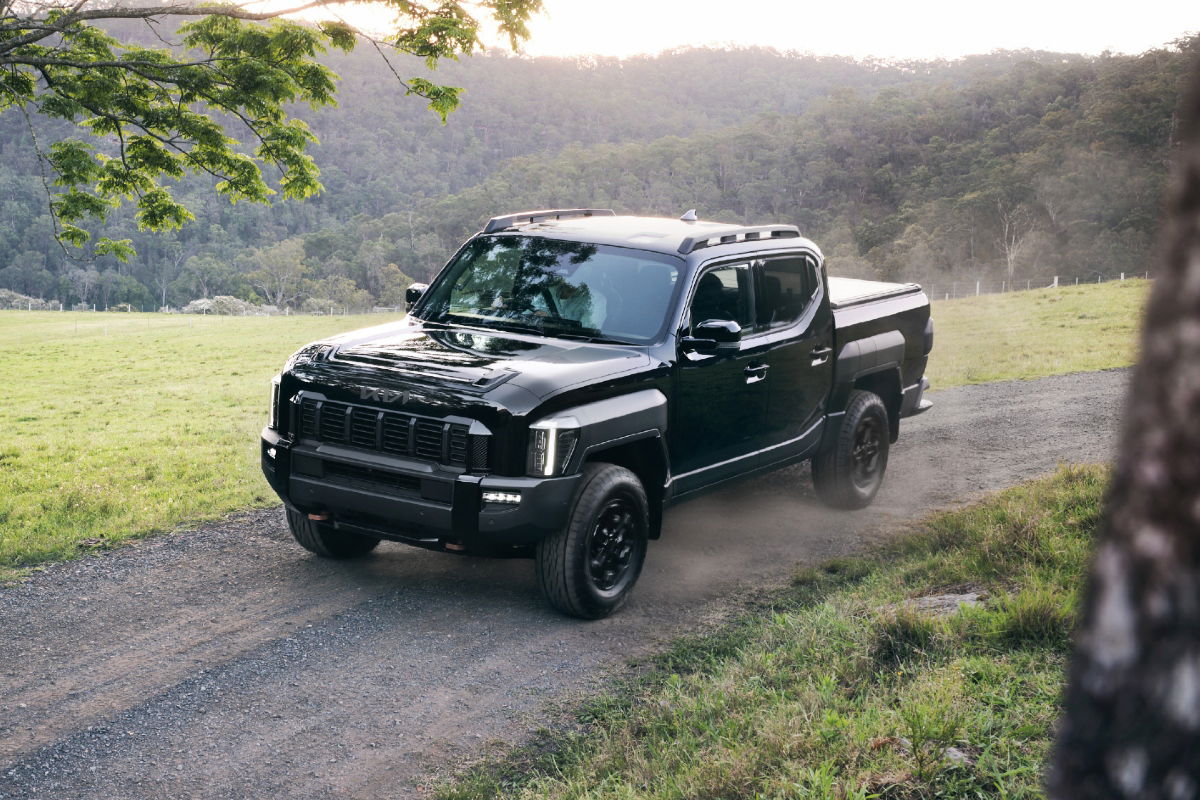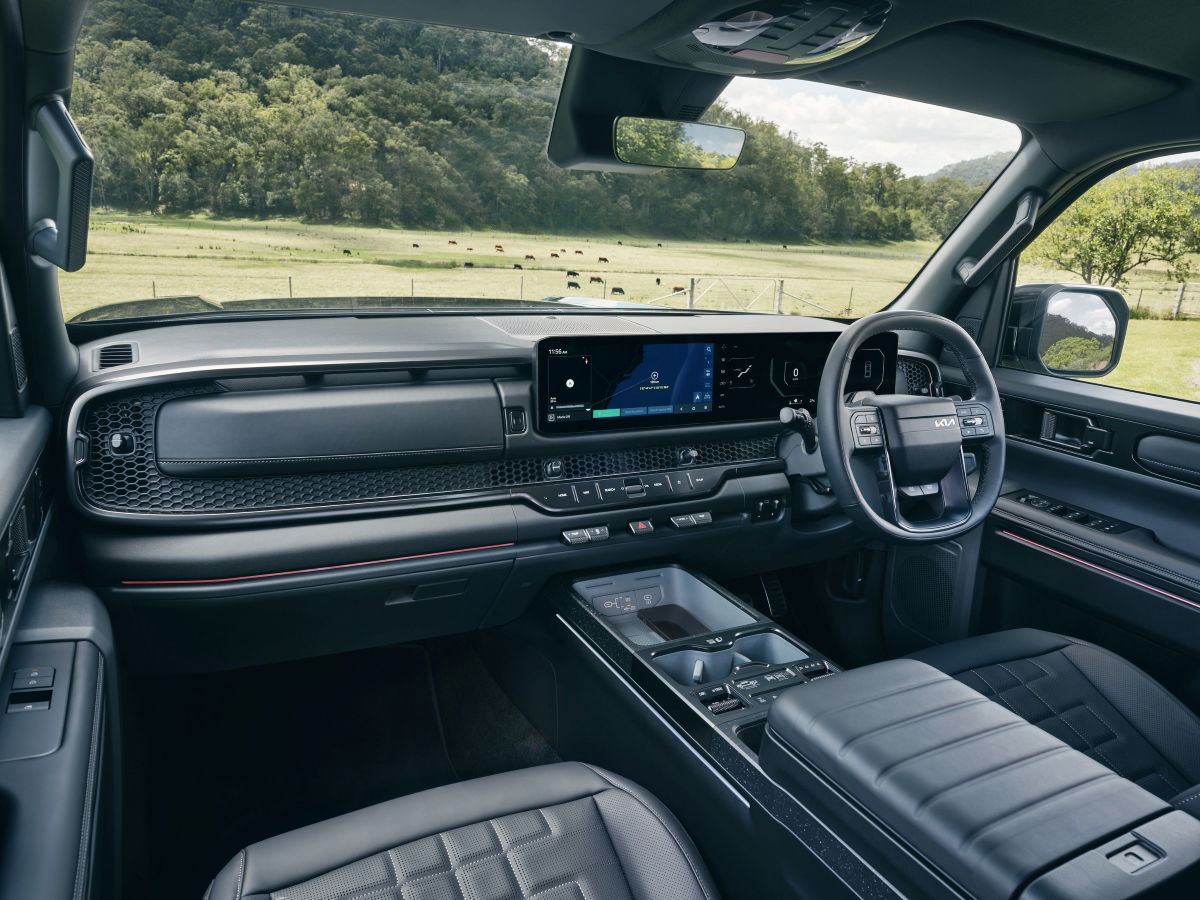Kia seemingly employed every sporting celebrity in Australia to hype up its all-new, critically-important Tasman ute. From Steve Waugh to Buddy Franklin, Ash Barty, Alfie Langer and even Rafael Nadal, Kia must have spent a fortune on its advertising build-up.
But all the sports stars in the world can’t hide you in Australia’s cut-throat ute contest – either you’re good enough or you’re not.
Let’s start by dealing with the elephant in the room. The Tasman has come in for plenty of criticism for its looks, and not without some justification. Kia admits that it was targeting a ‘lifestyle’ audience for its ute, rather than purely the ‘working’ ute market and therefore went for a radically different design compared to its boxy, truck-like competition.
As Kia’s global CEO Ho Sung Song said at the time of its reveal, the brand’s ambitions were high: “Kia’s first-ever pickup truck was created from the ground up to transform the market and respond to the growing preference for lifestyle-oriented trucks with advanced features.”
Transforming the Australian ute market would be no small feat, given the stranglehold the Ford Ranger and Toyota HiLux have on it, but I suspect Kia Australia’s management would settle for simple sales success.
Kia took a risk with the looks of the Tasman and clearly designed something very different. Looks are a subjective element of a car though, so I will simply leave it with you whether you like the Tasman’s style or not.

Instead, for the remainder of this review I’m going to focus on the other tangible aspects of the Tasman that define its chances of winning buyers in a crowded and intense ute market. Specifically performance, driving dynamics and practicality.
Kia copped plenty of flak for its decision to only offer a 2.2-litre four-cylinder turbo diesel engine in its ute, even though it offers up a respectable 156kW of power and 441Nm of torque. While there are bigger engines offered by many rivals, for the record, against its direct rivals the Tasman stacks up well. Ford’s 2.0-litre twin-turbo four-cylinder makes 154kW/500Nm, Toyota’s 2.8-litre motor makes 150kW/500Nm and Isuzu’s new 2.2-litre four-pot makes just 120kW/400Nm.
This is the same 2.2-litre engine Kia and Hyundai use in a number of applications, including the Staria-Load, and that vans has always done a good job either towing or with a load in the back.

Certainly paired to an eight-speed automatic, and all-wheel drive, the Tasman makes the most of the available performance. It felt easy and relaxed to drive, with more refinement than many of its peers.
Although, with claimed fuel consumption of 8.1L/100km, the range-topping Tasman X-Pro we tested uses 0.9L/100km more than the Ford Ranger 2.0 manages.
While not a powerhouse, where the Tasman really excels is its driving manners. Kia Australia was involved with the ride and handling program earlier than any previous model, which is not surprising given the importance of the local market to Kia’s global sales expectations. But this means it is well-suited to local conditions, arguably as good or better than most of its rivals.
Kia benchmarked it against the Ranger and HiLux, but the focus on ensuring it appeals to the lifestyle audience shines through, with a comfortable and controlled ride, as well as responsive and direct steering.

The Tasman is amongst the most SUV-like driving experiences in the ute segment, perhaps the closest in those terms to Ford’s Ranger Raptor. The unlanded ride in particular was a stand out, lacking the bounciness that often plagues these types of utes.
But don’t mistake an SUV-like driving character for a useless ute, the Tasman is still a very capable workhorse. It has a 3500kg towing capacity and a 1195kg payload, so it can get down to business when needed. The tray bed measures 1512mm long, 1572mm wide (with 1186mm between the wheels) and 540mm deep. You can access it via steps built into the corners of the rear bumper, just like the Ranger. And once you get up there you’ll find the tray is illuminated and has a 240V power outlet for tradies to use their tools or other equipment.

And while the exterior looks are polarising, the interior design of the Tasman arguably sets a new bar for dual cab utes. It looks and feels more like an SUV than a workhorse, with a stylish and practical fit and finish that most definitely sets it apart from its alternatives in a positive way.
Kia is offering a broad range of Tasman models, both 4×2 and 4×4, with five specification levels. We only drove the highest-grade X-Pro, which has a drive-away price of $77,990, putting it into a direct contest against the Ranger Wildtrak 2.0 (from $77,640) and HiLux GR Sport (from $74,310).
Beating both of those is no easy task, but if you fall into the camp of people who either like or are unoffended/unconcerned by the styling, you’ll find a very appealing new ute. It offers respectable performance, competitive capability and above-average interior design and driving manners.
So, putting the looks and the celebrity-filled commercials aside, credit to Kia for an impressive effort with its first ute.

















Discussion about this post